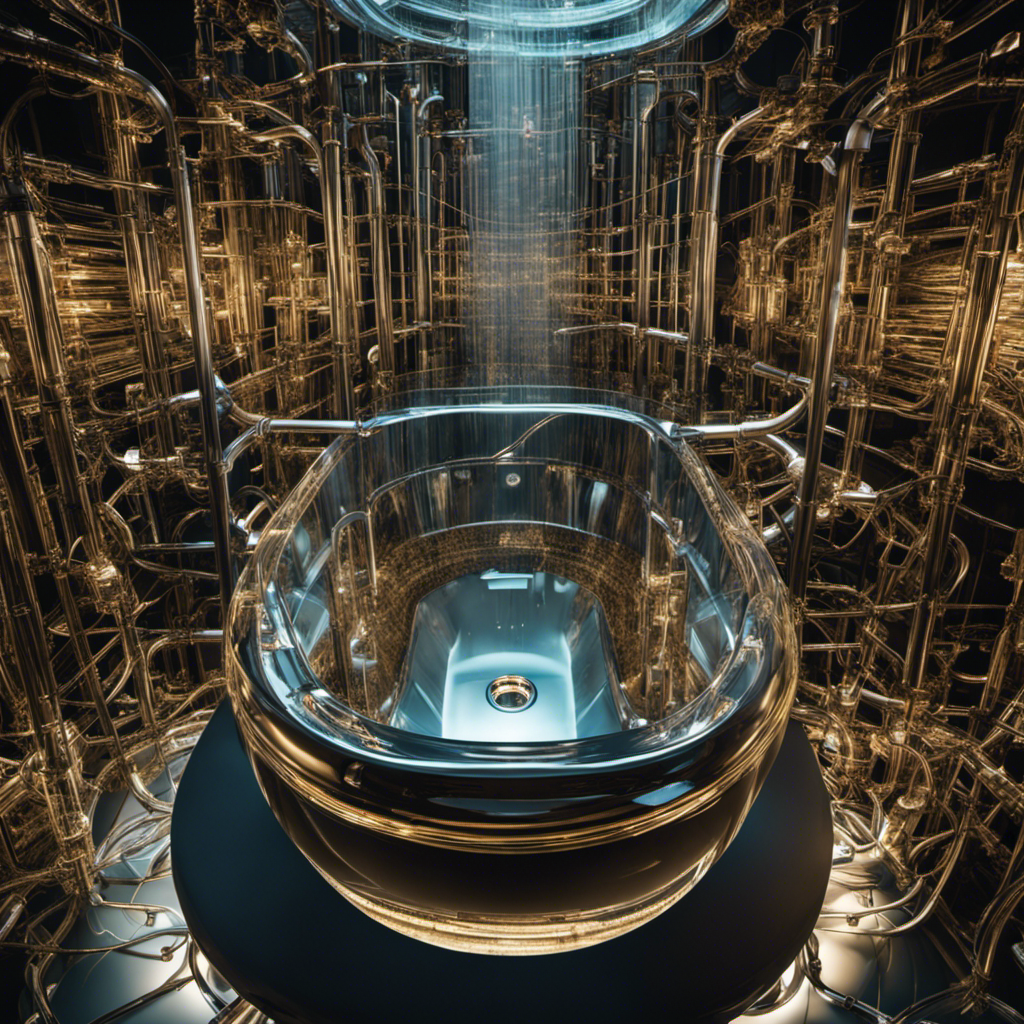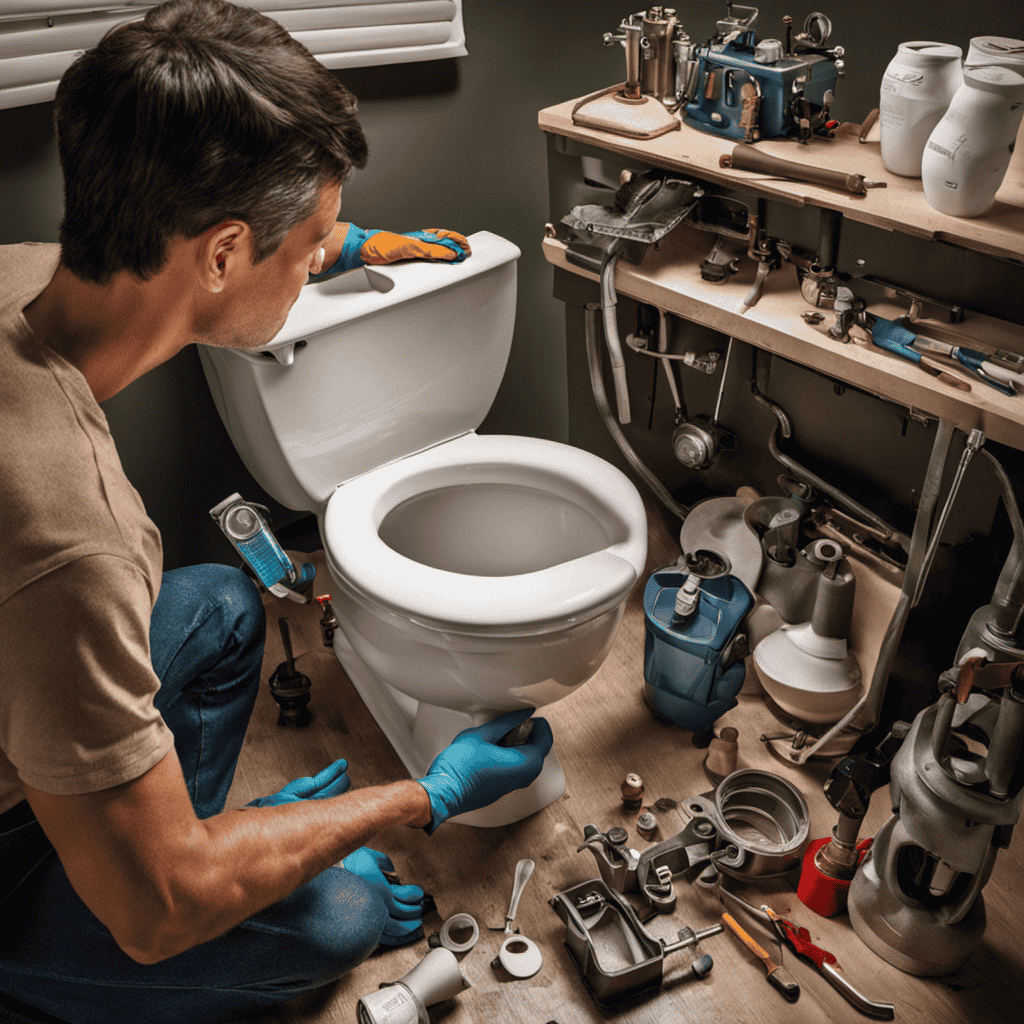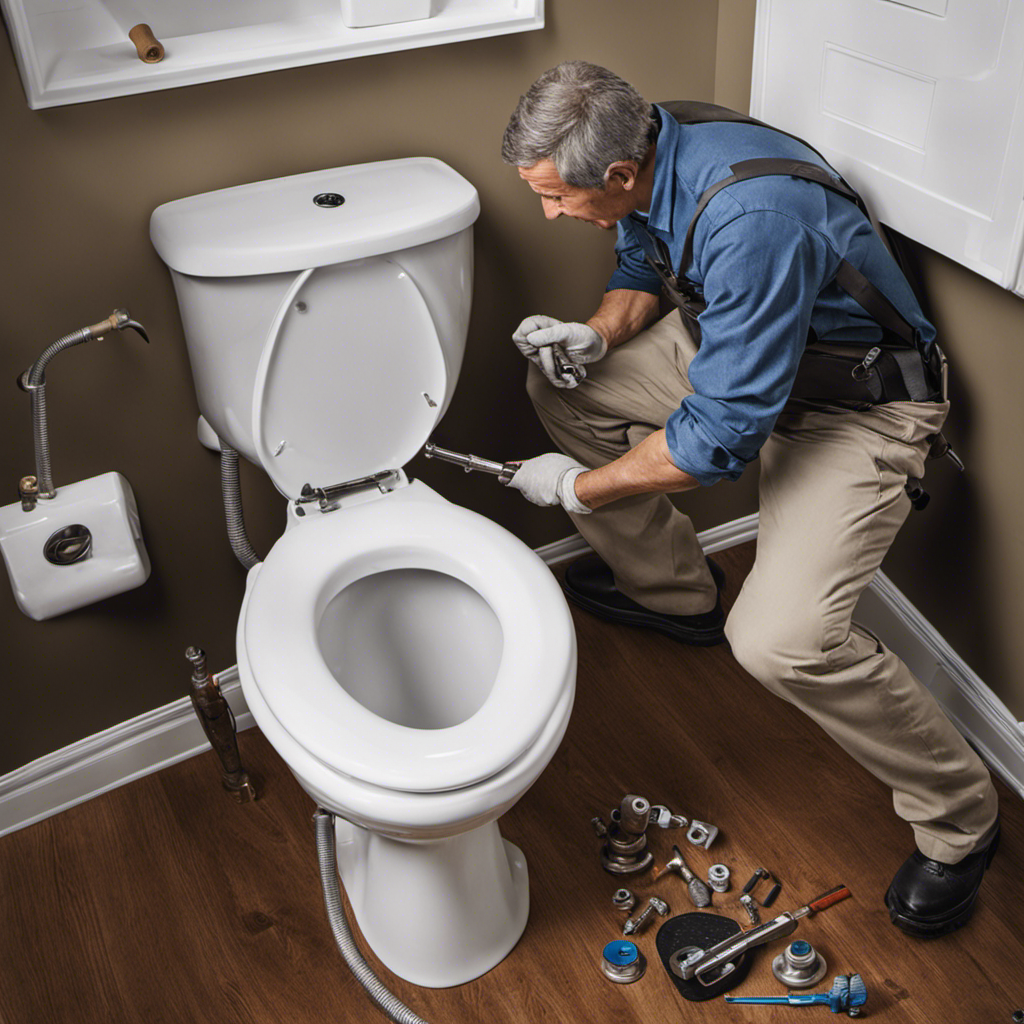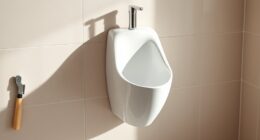As I stand in front of the toilet, a familiar sound fills the air – the powerful rush of water swirling down the drain. Have you ever wondered how this simple act of flushing actually works?
In this article, I will take you on a journey through the intricate mechanisms behind a toilet flush. We will delve into the role of the flush valve, the function of the fill valve, and the importance of the flapper in this fascinating process.
So, let’s dive in and uncover the secrets of how a toilet flushes!
Key Takeaways
- The toilet flush involves a series of valves and pipes, including a flush lever, flapper valve, siphon jet, trapway, and sewage pipe.
- The flush valve releases a large amount of water quickly into the toilet bowl when the flush handle or button is pressed.
- The fill valve regulates the water level inside the toilet tank and refills it when empty. It comes in various types like ballcock, diaphragm, and float cup.
- The flapper allows water to flow from the tank into the bowl during a flush and prevents further water flow when the tank is empty. A faulty flapper can cause water leakage.
The Mechanism Behind the Toilet Flush
The mechanism behind the toilet flush involves a series of valves and pipes. When the flush lever is pressed, it lifts a flapper valve located at the bottom of the toilet tank. This allows water to rush from the tank into the toilet bowl through a siphon jet.
As the water fills the bowl, it creates enough pressure to push waste through the trapway and into the sewage pipe. To prevent water from continuously flowing into the bowl, a fill valve automatically opens, allowing the tank to refill with water. Once the tank is full, the fill valve closes, and the toilet is ready for the next flush.
This intricate system of valves and pipes ensures the efficient working of the toilet flush mechanism.
Understanding the Role of the Flush Valve
Understanding how the flush valve works is crucial in comprehending toilet flushing mechanisms. The flush valve is responsible for releasing a large amount of water quickly into the toilet bowl, which creates a forceful flush. It is typically made of rubber or plastic and is connected to the flush handle or button.
When the handle or button is pressed, it lifts the flush valve, allowing water to flow from the tank into the bowl. Once the flush is complete, the flush valve closes, preventing any more water from entering the bowl. Common problems with flush valves include leaks, clogs, and improper sealing. It is important to choose the right flush valve for your toilet to ensure proper functioning and efficient flushing.
Transitioning into exploring the function of the fill valve, let’s now delve into the next aspect of toilet flushing mechanisms.
Exploring the Function of the Fill Valve
To fully grasp how the fill valve functions, you’ll need to understand its role in refilling the toilet tank with water after a flush. The fill valve is an essential component of the toilet’s plumbing system, responsible for regulating the water level inside the tank. It detects when the tank is empty and initiates the refilling process.
Fill valves come in various types, each with its own unique design and function. Some common types include the ballcock, diaphragm, and float cup fill valves. These valves may differ in their mechanism of operation, but their purpose remains the same – to control the water flow into the tank.
Fill valve troubleshooting may be required if you notice issues such as continuous running water, low water levels, or noisy operation. Common problems can include a faulty valve seat, debris clogging the valve, or a worn-out float. By understanding the different types of fill valves and their functions, you’ll be better equipped to diagnose and resolve any issues that may arise.
| Fill Valve Type | Description |
|---|---|
| Ballcock | Traditional, lever-operated valve |
| Diaphragm | Uses a flexible diaphragm to control water flow |
| Float Cup | Utilizes a float attached to a cup-shaped valve |
| Piston | Employs a piston to regulate water levels |
| Pressure-Assist | Uses compressed air to force water into the tank |
The Importance of the Flapper in a Toilet Flush
If you’re experiencing issues with your toilet, one possible culprit could be a faulty flapper.
The flapper plays a crucial role in water conservation during a toilet flush. When you press the flush lever, it lifts the flapper, allowing water to flow from the tank into the bowl. Once the tank is empty, the flapper closes, preventing any further water from entering the bowl.
However, if the flapper is damaged or worn out, it may not create a proper seal, resulting in continuous water leakage into the bowl.
To troubleshoot common flapper issues, start by checking if the flapper is properly aligned and securely attached to the flush valve. Additionally, make sure there is no debris or mineral buildup preventing the flapper from closing tightly.
How Does the Flush Handle Control the Flush Process?
The flush handle lifts the flapper, allowing water to flow from the tank into the bowl.
Over the years, flush handle design has evolved to provide a more efficient and convenient flushing experience. Initially, flush handles were simple levers connected to the flapper with a chain or rod. Nowadays, you can find push-button or touchless flush handles that use sensors to detect when to initiate the flush.
The physics of water flow in a toilet flush are fascinating. When the flapper is lifted, water rushes out of the tank due to the force of gravity. This creates a siphon effect, where the water in the bowl is pulled downward, removing waste along with it.
The flush handle is a crucial component in controlling this process and ensuring a successful and hygienic flush.
Conclusion
In conclusion, the intricate workings of a toilet flush never cease to amaze.
From the flush valve to the fill valve, every component plays a crucial role in the flawless execution of flushing.
And let’s not forget about the star of the show, the flapper, whose graceful descent seals the deal.
But perhaps the unsung hero here is the humble flush handle, effortlessly controlling the flush process with a simple push or pull.
It’s truly a marvel of engineering, a testament to human ingenuity.
So next time you’re sitting on your porcelain throne, take a moment to appreciate the beauty of the toilet flush.










